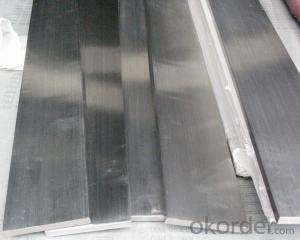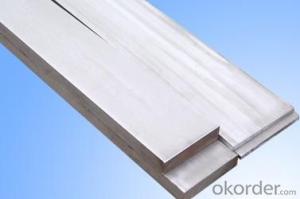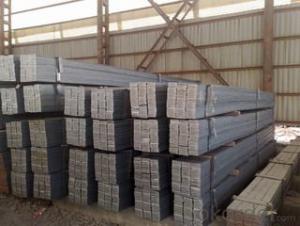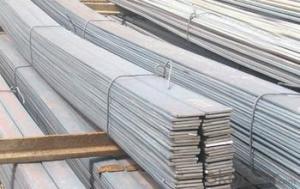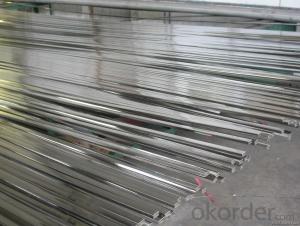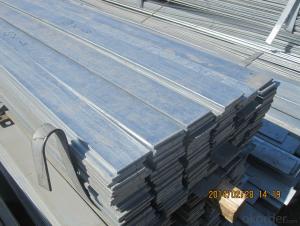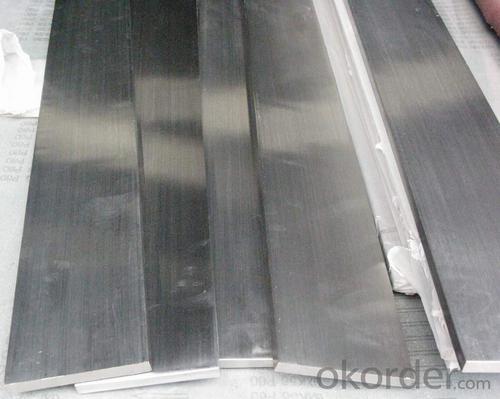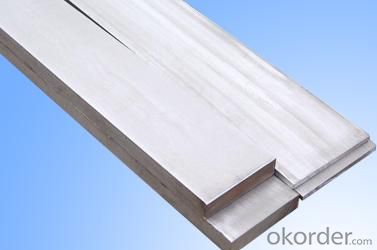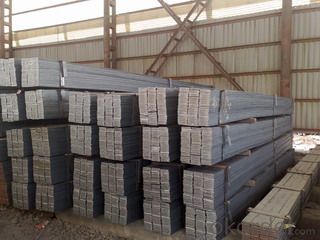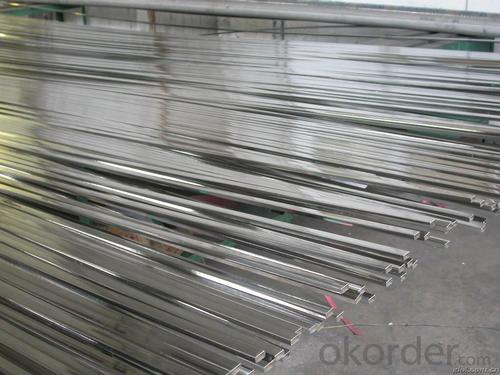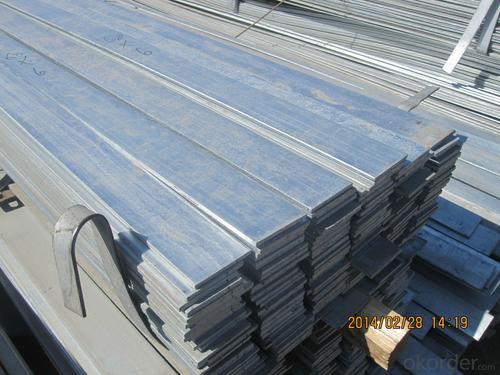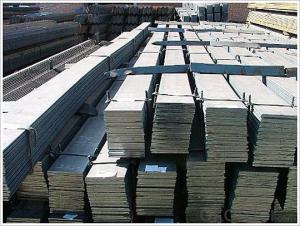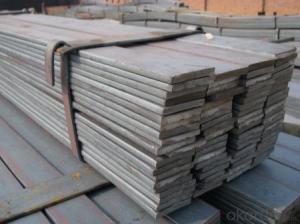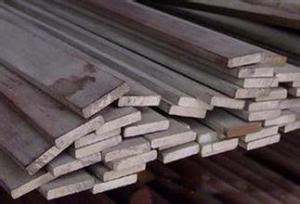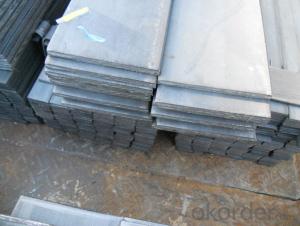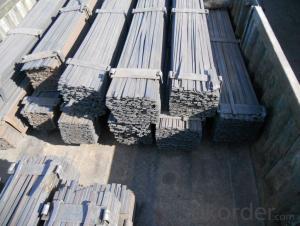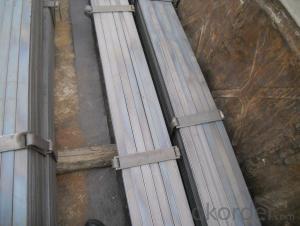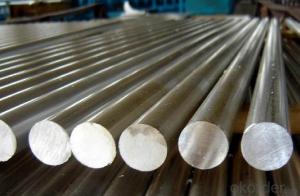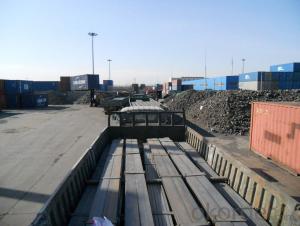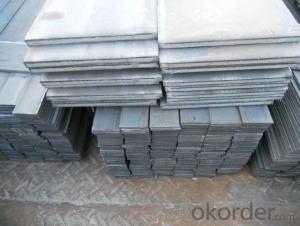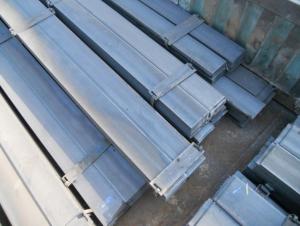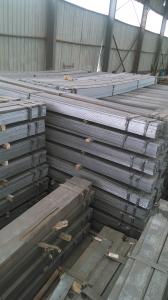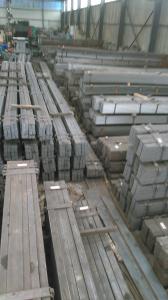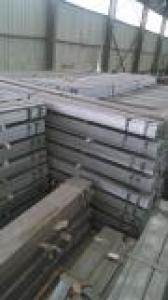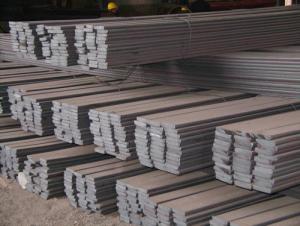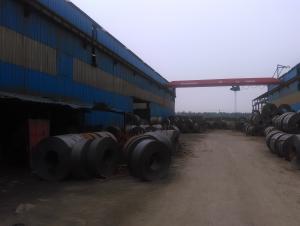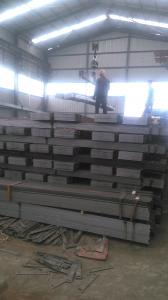Grade 304_304L Stainless Steel Flat Bar with High Quality
- Loading Port:
- Tianjin
- Payment Terms:
- TT OR LC
- Min Order Qty:
- 3 m.t.
- Supply Capability:
- 10000 m.t./month
OKorder Service Pledge
OKorder Financial Service
You Might Also Like
Grade 304_304L Stainless Steel Flat Bar with High Quality
Details of Grade 304_304L Stainless Steel Flat Bar with High Quality
Name | 200,300,400 series Stainless Steel Flat Bar |
Shape | Flat Bar |
Standard | GB/ASTM/SAE/AISI/DIN/JIS/EN/BS |
Surface Treatment: | Black/Peeling/Polished/Machined |
Delivery Condition: | Hot Rolled or Forged/Peeled or Black Surface |
Test | SGS/UT 100% Elements Testing |
Certificate: | ISO/Mill Certificate |
Service: | 24 hours online service / |
more than 20 years trading and manufacture | |
Quality Assurance: | the third party inspection, such as SGS, BV, TUV…etc. is acceptable |
Packaging Details: | Seaworthy Packaging or as per customer's packing instruction |
steel flat bar grade | 201/304/304L/309L/316/321 |
steel flat bar standard | GB, ASTM, AISI, EN, JIS |
steel flat bar thickness | 3mm-12mm |
steel flat bar width | 19mm-140mm |
steel flat bar length | 2m~6m or as customer requirement |
steel flat bar technique | Slitting hot rolled steel coil |
Chemical Composition of Grade 304_304L Stainless Steel Flat Bar with High Quality
Grade and Main chemical composition% | |||||||||
| C | Si | Mn | P≤ | S≤ | Cr | Mo | Ni | Other |
201 | ≤0.15 | ≤1.00 | 5.5-7.5 | 0.06 | 0.03 | 16-18 | - | 3.5-5.5 | N≤0.25 |
304 | ≤0.08 | ≤1.00 | ≤2.00 | 0.045 | 0.03 | 18-20 | - | 8-10.5 | - |
304L | ≤0.03 | ≤1.00 | ≤2.00 | 0.045 | 0.03 | 18-20 | - | 13-Sep | - |
309S | ≤0.08 | ≤1.00 | ≤2.00 | 0.045 | 0.03 | 22-24 | - | 15-Dec | - |
316 | ≤0.08 | ≤1.00 | ≤2.00 | 0.045 | 0.03 | 16-18 | 3-Feb | 14-Oct | - |
321 | ≤0.08 | ≤1.00 | ≤2.00 | 0.045 | 0.03 | 17-19 | - | 13-Sep | Ti≥5×C |
CNBM Introduction of Grade 304_304L Stainless Steel Flat Bar with High Quality
CNBM International Corporation is the most import and export platform of CNBM group(China National Building Material Group Corporation) ,which is a state-owned enterprise, ranked in 270th of Fortune Global 500 in 2015.
With its advantages, CNBM International are mainly concentrate on Cement, Glass, Iron and Steel, Ceramics industries and devotes herself for supplying high quality series of refractories as well as technical consultancies and logistics solution.
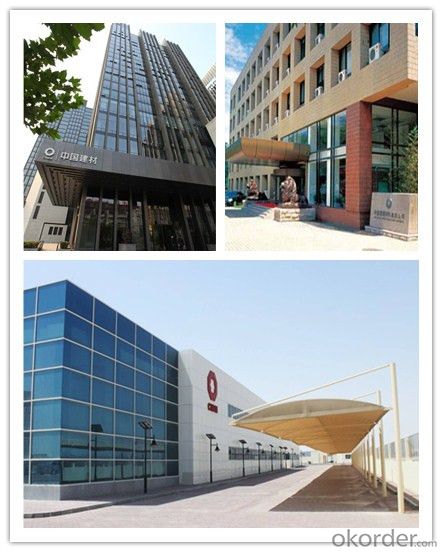
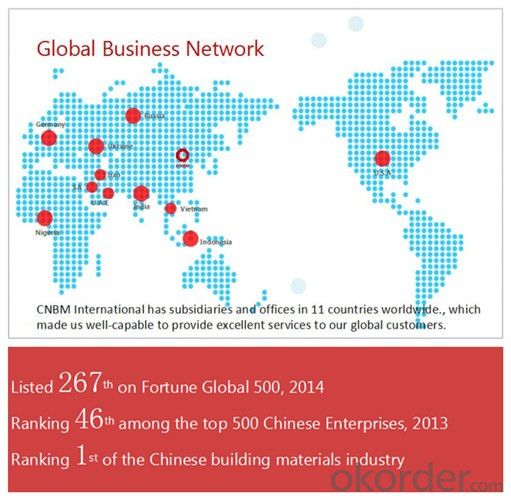
After-sale service |
|
Advantages
|
|
Packaging & Delivery of Grade 304_304L Stainless Steel Flat Bar with High Quality
Packaging Detail | Sea worthy packing /as per customer's packing instruction |
Delivery Detail | 15 ~ 40 days after receiving the deposit |
Products Show
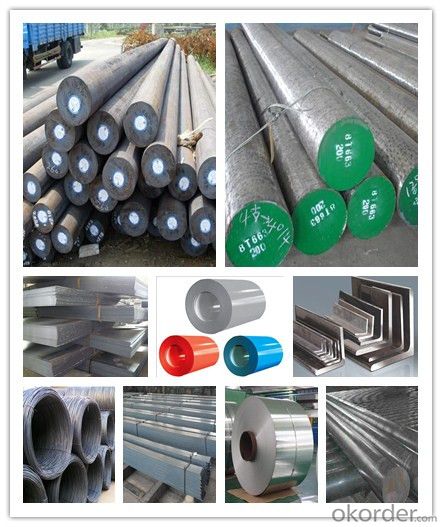
FAQ:
Are you a trading company or manufacturer? | Manufacturer |
What’s the MOQ? | 3 metric ton |
What’s your delivery time? | 15-35 days after downpayment received |
Do you Accept OEM service? | Yes |
what’s your delivery terms? | FOB/CFR/CIF |
What's the Payment Terms? | 30% as deposit,70% before shipment by T/T |
Western Union acceptable for small amount. | |
L/C acceptable for large amount. | |
Scrow ,Paybal,Alipay are also ok | |
Why choose us? | Chose happens because of quality, then price, We can give you both. Additionally, we can also offer professional products inquiry, products knowledge train (for agents), smooth goods delivery, excellent customer solution proposals. |
What's your available port of Shipment? | Main Port, China |
What’s your featured services? | Our service formula: good quality+ good price+ good service=customer's trust
|
Where are your Market? | Covering more than 160 countries in the world |
- Q: What is the negative deviation allowed by the national standard for galvanized flat steel of 40*4?
- 40*4 galvanized flat steel GB permitted negative deviation value is the thickness deviation value is 0.2mm, the deviation 0.4mm, the width deviation value is the upper deviation 0.5mm, lower deviation 1.0mm
- Q: Are steel flat bars suitable for architectural detailing?
- Yes, steel flat bars are suitable for architectural detailing. They offer strength, durability, and versatility, making them ideal for various architectural applications such as handrails, window frames, door frames, and decorative elements. Additionally, steel flat bars can be easily manipulated and shaped to meet specific design requirements, providing architects with flexibility in their creative vision.
- Q: Can steel flat bars be used for fencing or gate fabrication?
- Steel flat bars are suitable for fencing and gate fabrication purposes. Due to their durability, strength, and versatility, they are frequently employed in fencing and gate projects. By conveniently welding or bolting them together, a sturdy and secure fencing or gate structure can be created. Moreover, steel flat bars can be tailored to meet specific design criteria, rendering them a favored option for both residential and commercial fencing and gate applications.
- Q: Can steel flat bars be welded?
- Certainly, it is possible to weld steel flat bars. Welding serves as a prevalent and extensively employed technique for connecting or restoring steel materials, which encompasses flat bars. The procedure entails heating the steel until it reaches its melting point and subsequently melding the two sections with the aid of a welding electrode or filler material. The resultant weld forms a robust and long-lasting bond, rendering it suitable for an array of applications within the construction, manufacturing, and other industries where steel flat bars are frequently utilized. Nonetheless, adherence to appropriate welding protocols and methodologies is crucial to guarantee a prosperous weld that possesses structural integrity.
- Q: Are steel flat bars suitable for load-bearing applications?
- Yes, steel flat bars are suitable for load-bearing applications. They are commonly used in construction and engineering projects where strength and durability are required to support heavy loads. The flat shape of the bar provides stability and resistance to bending or warping under pressure, making it an ideal choice for load-bearing purposes.
- Q: Are steel flat bars available in different lengths?
- Yes, steel flat bars are available in different lengths. These lengths can vary depending on the specific requirements of the project or application. Steel flat bars are commonly available in standard lengths such as 6 feet, 8 feet, and 10 feet. However, they can also be custom cut to specific lengths as per the customer's needs. This flexibility in length options allows for greater versatility and convenience in various construction and industrial applications where steel flat bars are used.
- Q: Are steel flat bars available in different grades of corrosion resistance?
- Yes, steel flat bars are available in different grades of corrosion resistance. Steel is an alloy that can be modified with various elements to enhance its resistance to corrosion. The most common types of corrosion-resistant steel flat bars include stainless steel, weathering steel, and galvanized steel. Stainless steel flat bars are known for their high resistance to corrosion due to the presence of chromium. They are available in different grades such as 304 and 316, each with varying levels of corrosion resistance. These grades are often used in environments where exposure to moisture, chemicals, or high temperatures is common, such as in marine applications, food processing industries, or architectural structures. Weathering steel, also known as corten steel, is another type of corrosion-resistant steel flat bar. It forms a protective layer of rust on its surface, which acts as a barrier against further corrosion. Weathering steel is commonly used in outdoor structures and architectural applications, as it provides a rustic and aesthetically pleasing appearance while offering excellent durability and resistance to atmospheric corrosion. Galvanized steel flat bars are made by coating regular steel with a layer of zinc, which acts as a sacrificial barrier against corrosion. This type of steel is widely used in construction, fencing, and other applications where exposure to moisture and corrosive environments is a concern. In summary, steel flat bars are available in different grades of corrosion resistance, including stainless steel, weathering steel, and galvanized steel. The choice of grade depends on the specific requirements of the application and the level of corrosion resistance needed.
- Q: Can steel flat bars be heat-treated?
- Indeed, it is possible to subject steel flat bars to heat treatment. By undergoing controlled heating and cooling, this process effectively transforms the physical and at times chemical attributes of the steel. The objective behind heat treatment varies, encompassing the augmentation of hardness, the enhancement of strength, the fortification of toughness, and the customization of other mechanical properties to meet specific application requirements. Depending on the desired results, various heat treatment techniques such as annealing, normalizing, quenching, and tempering may be employed on steel flat bars.
- Q: What are the different shapes available in steel flat bars?
- Steel flat bars are available in a variety of shapes, including rectangular, square, round edge, and tapered edge profiles.
- Q: What are the different methods of finishing the edges of steel flat bars?
- There are several methods of finishing the edges of steel flat bars, including chamfering, rounding, bevelling, and deburring. Chamfering involves cutting or grinding a beveled edge on the corners of the bar to create a smoother finish. Rounding, on the other hand, involves removing sharp edges and creating a rounded profile for improved safety and aesthetics. Bevelling is a process of cutting or grinding an angled edge along the length of the bar to create a specific angle or to prepare it for welding. Lastly, deburring involves removing any sharp or rough edges left after the manufacturing process, resulting in a cleaner and safer edge.
Send your message to us
Grade 304_304L Stainless Steel Flat Bar with High Quality
- Loading Port:
- Tianjin
- Payment Terms:
- TT OR LC
- Min Order Qty:
- 3 m.t.
- Supply Capability:
- 10000 m.t./month
OKorder Service Pledge
OKorder Financial Service
Similar products
Hot products
Hot Searches
Related keywords
